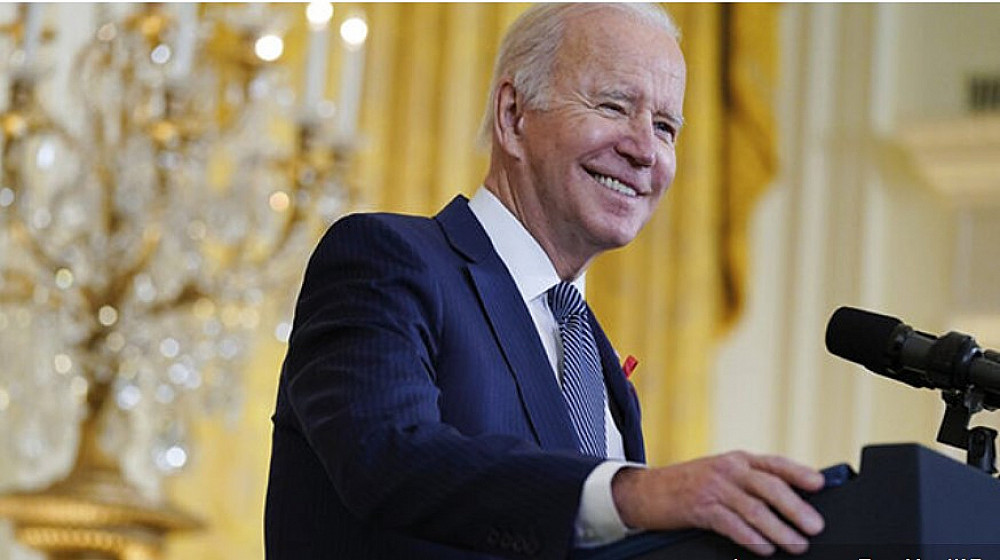The US President Joe Biden may have opposite views on nearly all the aspects of foreign policy pursued by Donald Trump, but one area is likely to remain unchanged if not pursued even more vigorously: Washington’s Indo-Pacific strategy.
China will remain at the top of the US foreign policy agenda. Trump’s tenure was characterized by a quest to find a long-term strategic solution to counter China’s rise in the Indo-Pacific. Under Trump, a bipartisan consensus within the American political establishment emerged. This was evidenced by numerous reports of a changed attitude toward what Beijing wants to attain.
In a way, Trump continued the Obama administration’s “pivot to Asia.” Obama recognized that Asia was becoming the “world’s political and economic center of gravity.” The shift involved refocusing the US geopolitical thrust from the Middle East to Asia by strengthening alliances and partnerships and increasing the US’ economic presence through the Trans-Pacific Partnership (TPP).
Trump changed aspects of Obama’s policy (and exited the TPP), but shared his vision of a free and open Indo-Pacific in which the geographic definition of “Asia” is expanded. Both administrations prioritized strengthening bilateral and multilateral ties with allies and partners to address common threats. In fact, the US Indo-Pacific strategy under Trump was more vocal about China than was Obama’s Strategic Rebalance policy.
Trump’s administration also put a special emphasis on Oceania to an extent that no preceding US administration had ever done. For instance, the National Security Council now has a director for Oceania Affairs. There were several unprecedented visits in 2019 by the secretaries of state and defense to Micronesia and Palau. A historic summit between the leaders of the Freely Associated States and Trump was held in Washington in 2019.
Under Biden, any changes to the US Indo-Pacific strategy will likely be more style than substance. There will be an emphasis on enhancing relations with the states around China. Biden’s presidency will be crucial, as in the next four years Washington’s grand strategic approach to China will finally crystallize.
As the US Indo-Pacific strategy under Trump was quite chaotic, some degree of thought and appraisal may indeed be in order. Trump’s administration exhibited certain indecisiveness toward China that might have been based in the nature of the US government. For a huge bureaucratic apparatus with numerous agencies, each with its own vision, a certain time span is necessary to gear toward a more protracted competition mode with China.
Unlike non-democratic states, where divisions are hidden from public view and decisions are made without consulting the people, and often without economic considerations, the democratic US traditionally needs much longer to adjust to new geopolitical realities. This can take years.
But it would be overreaching to claim that Biden’s China policy will be wholly confrontational. As an experienced foreign policy maker, Biden understands that perpetual confrontation with Beijing would be costly and could even be ineffective at a time when a reinvigoration of alliances and a general improvement in the global position of the US is underway.
There could be an attempt to reset relations with China to prevent a total breakdown in bilateral ties. A motivator could be cooperation in areas of global importance for both sides—economic stability, for instance. But it will also be clear that any rapprochement is unlikely to last long, and the general thrust of Trump’s Indo-Pacific strategy will be further pursued.
This would include doubling down on strengthening alliances and partnerships in the Indo-Pacific. In an era of great-power competition, the US is putting an emphasis on cooperation with maritime rim and island states to contain China’s assertiveness.
Biden also understands that the need for alliances encompasses more than the Indo-Pacific. In fact, to be successful in challenging China, the US will need alliances in other parts of Eurasia. The Indo-Pacific approach under Biden will likely be part of a global approach. China’s assertiveness is not, after all, only about a certain region. It is rather a monumental competition between the two powers all around the globe.
Thence will come the American rapprochement with the European powers. Approaches to Russia could even be made to limit disagreements and perhaps try to divide the Russia-China partnership. The success of this approach would depend on how much the US is willing to sacrifice in the Russian borderland regions.
Biden’s presidency will in many ways be a defining one, as it will correspond to the period when a long-term US strategy toward China finally takes shape. It will set the stage for a prolonged competition, one the US will not be able to win without the support of a large number of allies scattered across Eurasia. A special emphasis will thus be made by Biden to build strong ties with potential partners and reinvigorate faltering relations with traditional allies.
The article was primarily published by Georgia Today
Image: Evan Vucci/AP
